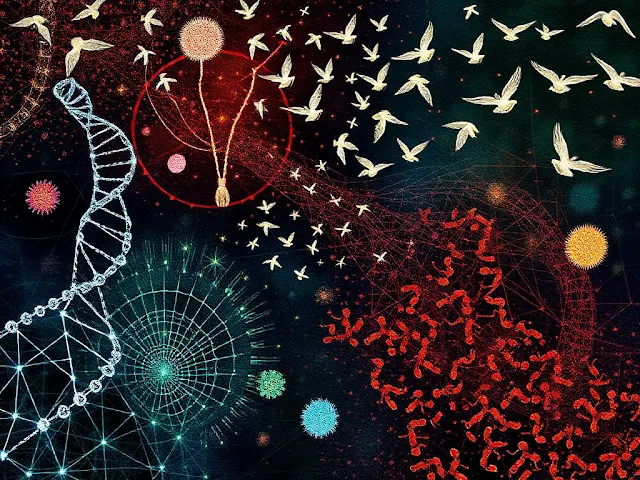The Evolution of Evolutionary Computation: A Journey Through Nature-Inspired Algorithms
In the realm of computer science and artificial intelligence, the quest for solving complex problems has led to the development of various innovative techniques. Among these, evolutionary computation stands out as a fascinating approach inspired by the principles of natural selection and biological evolution. This blog explores the evolution of evolutionary computation, its key concepts, applications, and future prospects.
What is Evolutionary Computation?
Evolutionary computation is a subset of artificial intelligence that employs mechanisms inspired by biological evolution, such as selection, mutation, and crossover, to solve optimization and search problems. It encompasses a variety of algorithms, including genetic algorithms, genetic programming, evolution strategies, and differential evolution. These algorithms mimic the process of natural evolution, where the fittest individuals are selected for reproduction in order to produce the next generation.
Key Concepts in Evolutionary Computation
Population: In evolutionary computation, a population consists of a set of potential solutions to a given problem. Each individual in the population represents a possible solution, often encoded as a string of bits, numbers, or other data structures.
Fitness Function: The fitness function evaluates how well each individual in the population solves the problem at hand. It assigns a fitness score based on predefined criteria, guiding the selection process.
Selection: This process involves choosing individuals from the current population to create offspring for the next generation. Various selection methods exist, including roulette wheel selection, tournament selection, and rank-based selection.
Crossover: Crossover, or recombination, is a genetic operator used to combine the genetic information of two parent individuals to produce one or more offspring. This mimics the biological process of reproduction and introduces diversity into the population.
Mutation: Mutation introduces random changes to an individual's genetic makeup, ensuring genetic diversity and preventing premature convergence on suboptimal solutions.
Generations: The process of selection, crossover, and mutation is repeated over multiple generations, allowing the population to evolve and improve over time.
The Evolution of Evolutionary Computation
The roots of evolutionary computation can be traced back to the 1960s and 1970s, with the development of genetic algorithms by John Holland. Holland's work laid the foundation for understanding how adaptive systems could be modeled using principles of natural selection. His book, "Adaptation in Natural and Artificial Systems," published in 1975, introduced key concepts that would shape the field.
In the following decades, researchers expanded upon Holland's ideas, leading to the emergence of various evolutionary algorithms. Genetic programming, introduced by John Koza in the 1990s, allowed for the evolution of computer programs, further broadening the scope of evolutionary computation.
As computational power increased and the availability of data grew, evolutionary computation found applications in diverse fields, including engineering, finance, robotics, and bioinformatics. The ability to tackle complex optimization problems made it a valuable tool for researchers and practitioners alike.
Applications of Evolutionary Computation
Optimization Problems: Evolutionary algorithms are widely used for solving optimization problems in various domains, such as engineering design, scheduling, and resource allocation.
Machine Learning: Evolutionary computation can be employed to optimize hyperparameters in machine learning models, feature selection, and even the architecture of neural networks.
Robotics: In robotics, evolutionary algorithms are used for evolving control strategies, path planning, and even the design of robotic structures.
Game Development: Game developers utilize evolutionary computation to create adaptive AI agents that can learn and evolve strategies over time, enhancing the gaming experience.
Bioinformatics: Evolutionary algorithms play a crucial role in analyzing biological data, such as protein structure prediction and gene sequencing.
The Future of Evolutionary Computation
As technology continues to advance, the future of evolutionary computation looks promising. The integration of evolutionary algorithms with other AI techniques, such as deep learning and reinforcement learning, is an exciting area of research. This hybrid approach could lead to more robust and efficient solutions for complex problems.
Moreover, the growing interest in explainable AI (XAI) highlights the need for transparent and interpretable models. Evolutionary computation, with its population-based approach, offers a unique perspective on understanding the decision-making process of algorithms.
In conclusion, evolutionary computation represents a remarkable intersection of biology and computer science. Its ability to adapt and evolve solutions to complex problems has made it an invaluable tool across various fields. As we continue to explore the potential of this nature-inspired approach, the future holds endless possibilities for innovation and discovery.
References
Books:
- Holland, J. H. (1975). Adaptation in Natural and Artificial Systems. University of Michigan Press.
- Koza, J. R. (1992). Genetic Programming: On the Programming of Computers by Means of Natural Selection. MIT Press.
- Michalewicz, Z. (1996). Genetic Algorithms + Data Structures = Evolution Programs. Springer.
Research Papers:
- Goldberg, D. E. (1989). "Genetic Algorithms in Search, Optimization, and Machine Learning." Addison-Wesley.
- Bäck, T., Fogel, D. B., & Michalewicz, Z. (1997). Handbook of Evolutionary Computation. IOP Publishing Ltd.
Online Resources:
YouTube Videos
Introduction to Genetic Algorithms:
- Genetic Algorithms Explained - A comprehensive introduction to genetic algorithms and their applications.
Evolutionary Algorithms:
- Evolutionary Algorithms - A Brief Introduction - This video provides a brief overview of evolutionary algorithms and their key concepts.
Genetic Programming:
- Genetic Programming: Evolving Programs - An introduction to genetic programming and how it can be used to evolve computer programs.
Applications of Evolutionary Computation:
- Applications of Evolutionary Algorithms - A video discussing various applications of evolutionary algorithms in real-world scenarios.
Deep Learning and Evolutionary Algorithms:
- Combining Deep Learning and Evolutionary Algorithms - This video explores the integration of deep learning with evolutionary algorithms.


No comments:
Post a Comment
Thanks for visiting! I love reading your comments.